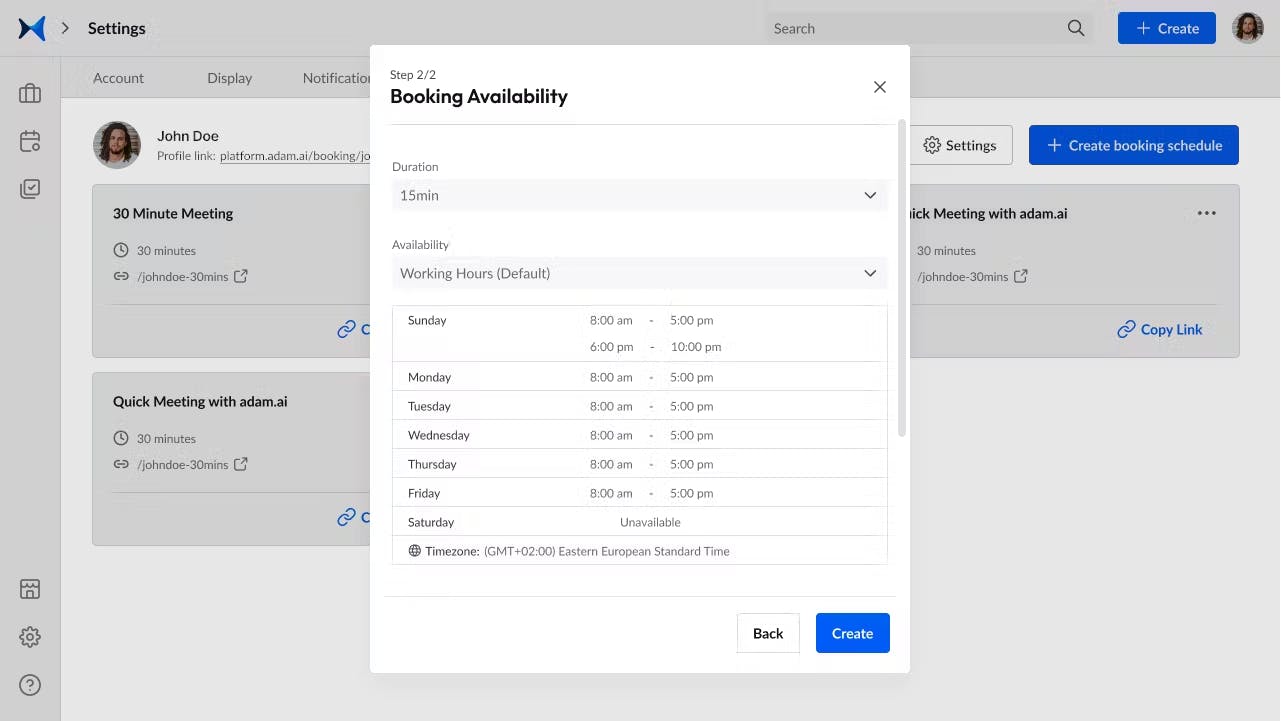Published November 30, 2023
-
11 mins read
Chairman vs CEO: Understanding the Distinct Roles in Corporate Leadership

Shaimaa Badawi

The roles of chairman and CEO emerge as crucial elements, each holding a unique and significant place in the governance and management of a company.
Understanding the distinctions and synergies of a chairman vs. CEO is crucial for anyone navigating the corporate world.
In this article, we will explore their distinct responsibilities, how their roles intertwine, and the implications of having one individual occupy both positions.
What is a chairman?
A chairman, often regarded as the pinnacle of an organization's hierarchy, holds a crucial role in steering the board of directors and, by extension, the entire company. Unlike a CEO who is deeply involved in the day-to-day operations, a chairman's responsibilities orbit around high-level strategic guidance and governance.
Primarily, the chairman leads the board, ensuring it functions effectively and adheres to its responsibilities to stakeholders. This involves orchestrating board meetings, setting agendas, and fostering communication between the board and executive teams. It's a role that requires a blend of diplomatic skill and strategic insight, as the chairman must navigate diverse opinions and interests to reach a consensus on key company matters.
Role and responsibilities
The chairman plays a vital role in ensuring the company remains compliant with industry regulations and practices sound financial decision-making. This responsibility underscores the need for a chairman to possess a deep understanding of the business landscape and the challenges it faces.
In some organizations, the chairman may also engage more directly in management, although this varies based on the company's size, governance structure, and regional regulations. The debate over whether the roles of chairman and CEO should be separate or combined is ongoing. Proponents of separation argue that it fosters board independence and reduces conflict, aligning with agency theory. Meanwhile, stewardship theory supporters see advantages in having a unified leadership, allowing for more streamlined decision-making.
The chairman's influence is akin to that of a conductor in an orchestra, where their leadership style and decisions significantly impact the board's functionality and, consequently, the company's direction. In this high-stakes role, the chairman is not just a figurehead but a pivotal force in shaping the organization's future.
What is a CEO?
The Chief Executive Officer (CEO) stands as a central figure in a company, embodying the highest-ranking executive role. Unlike a chairman, who oversees the board of directors, a CEO is deeply immersed in the company's day-to-day operations and strategic decision-making.
In larger organizations, the CEO may focus more on high-level strategic decisions and overall company growth, delegating operational aspects to other senior executives. The CEO's involvement in executive-level recruiting and hiring decisions underscores their role in shaping the company culture and driving team performance.
Role and responsibilities
At the core of a CEO's responsibilities is the development and implementation of the company's strategic plan. This involves making pivotal decisions about market entry, competition, and internal operations. The CEO is the primary liaison between the company's board of directors and its senior leadership, ensuring that daily activities align with broader strategic objectives. They are accountable to the board, reporting on the company’s performance and progress toward its goals.
The CEO's influence extends beyond internal management to being the public face of the organization. They play a crucial role in representing the company to external stakeholders, including investors, customers, and the media. This dual role of internal strategist and external ambassador requires a CEO to have a comprehensive understanding of the business landscape and the ability to navigate it effectively.
The role of a CEO varies based on factors like company size, culture, and structure. In some cases, a CEO may also be the board chairman, although this depends on the company's governance structure and regional regulations. Whether focusing on financial strategies, team building, or organizational culture, a CEO's role is multifaceted and critical to a company's success.
What does a chairman and a CEO have in common?
Despite the distinct roles of a chairman and a CEO in a corporation, there are several key areas where their responsibilities and functions converge. These similarities are crucial in ensuring the company's success and strategic alignment, so let's explore what these roles have in common.
1. Direction and strategy
Both the chairman and the CEO play instrumental roles in determining the overall direction and strategy of the company. While the chairman might do this from a more overarching, governance-focused standpoint, the CEO implements these strategies through day-to-day operations and decision-making.
2. Accountability to the board
Both figures are accountable to the board of directors. The CEO reports on operational aspects and company performance, while the chairman ensures that the board's decisions and oversight are in line with the company's strategic direction.
3. Leadership in general management
Both roles require strong leadership skills, as they both influence general management. The CEO leads the executive team and manages the company's operations, while the chairman leads the board, shaping its approach to governance and policy-making.
4. Representation of the company
Both the chairman and the CEO represent the company to outside stakeholders. The CEO often serves as the face of the company, engaging with customers, investors, and the media, while the chairman represents the interests and governance of the company at a higher level.
5. Reporting on company performance
Regular reporting on the company's performance is a key responsibility for both. The CEO's reports are typically more detailed about operational aspects, whereas the chairman's reports focus on governance and strategic oversight.
6. Power and influence
Both positions hold significant power and influence within the organization. The CEO influences the company's culture, operational success, and strategic execution, while the chairman wields influence over governance, board dynamics, and long-term strategic direction.
These shared responsibilities underscore the need for a harmonious relationship between the chairman and CEO, ensuring a cohesive approach to leading the company. Their collaborative efforts are vital in steering the company toward its goals while maintaining accountability and transparency at the highest levels of management.
What are the differences between a chairman and a CEO?
The roles of a chairman and a CEO, while intersecting in certain areas, are fundamentally distinct in a corporation, each with its own set of responsibilities and areas of focus. Here are the main differences between a chairman and CEO.
1. Position in the corporate hierarchy
The chairman heads the board of directors, a governing body that provides oversight and strategic direction. The CEO, on the other hand, is the top-ranking executive in the company, responsible for operational management and execution of strategies.
2. Scope of responsibilities
The chairman's responsibilities are more focused on governance, strategic oversight, and ensuring the board functions effectively. In contrast, the CEO is deeply involved in the daily management of the company, overseeing operations, making corporate decisions, and managing resources.
3. Role in meetings
The chairman runs board meetings, setting the agenda and guiding discussions to align with the company's strategic direction. The CEO, while often participating in these meetings, primarily reports on operational aspects and executes the strategies and decisions made by the board.
4. Representation
While both roles involve representing the company, the chairman represents the board of directors and the interests of the shareholders, focusing on governance and oversight. The CEO represents the company's operational and strategic interests to external stakeholders, including investors, customers, and the media.
5. Strategic vs. operational focus
The chairman is concerned with the overall direction and long-term strategy of the organization, ensuring alignment with shareholder interests and corporate governance. The CEO, however, is tasked with implementing these strategies, managing the company's day-to-day operations, and ensuring it meets its short-term and long-term goals.
6. Accountability and oversight
The CEO is accountable to the board of directors and responsible for executing strategies in line with the board's direction. Meanwhile, the chairman, along with the board, is responsible for overseeing the CEO’s performance and ensuring the company's stability and profitability.
7. Role in corporate governance
The board, led by the chairman, is involved in critical decisions such as appointing and evaluating the CEO, setting long-term plans, and overseeing senior-level executives. The CEO, while a key decision-maker, operates within the framework and strategic direction set by the board.
The chairman and CEO roles are complementary yet distinct, with the chairman focusing on strategic oversight and governance, and the CEO on operational management and execution. The effectiveness of a company often hinges on the collaborative dynamic between these two pivotal roles.
Chairman and CEO: Should they be one and the same?
When deliberating whether a single individual should hold both the chairman and CEO roles within a company, it's crucial to weigh the advantages and disadvantages of combining or separating these positions.
Advantages of separating the roles
- Enhanced focus and dedication: Separating the roles allows each leader to fully concentrate on their distinct responsibilities. The CEO can focus on day-to-day operations and strategic implementation, while the chairman can concentrate on governance and oversight.
- Balanced power and perspective: Having different individuals in these roles creates a healthy balance of power. It prevents any one person from having excessive influence, fostering a more democratic decision-making process within the company.
- Diverse insights and independent oversight: An independent chairman can bring diverse perspectives to the board, providing checks and balances on the CEO’s decisions. This diversity enhances the quality of governance and strategic oversight.
- Avoiding conflict of interests: Separation eliminates the potential conflict of interest that arises when a CEO is also responsible for evaluating their own performance and setting their compensation as chairman.
- Clear communication channels: With distinct roles, there's a clearer delineation of who speaks for the board and who represents the company's operational interests, reducing confusion among stakeholders.
Disadvantages of separating the roles
- Potential for conflict and disconnection: Separating the roles might lead to misalignment between the board and executive management, potentially disrupting the governance flow and decision-making.
- Increased costs: Having two separate leaders increases the financial burden on the company, especially in terms of compensation and the resources needed to support both roles.
- Challenges in leadership succession: Finding qualified candidates for two top leadership positions can be more challenging than filling a combined role, potentially impacting the board’s succession planning.
- Risk of diluted company vision: With two separate leaders, there's a risk of diverging visions and strategies for the company, which can lead to inconsistent messaging and strategic direction.
Advantages of combining the roles
- Streamlined decision-making: A joint chairman and CEO can make decisions more swiftly, as they have a comprehensive view of both the operational and governance aspects of the company.
- Unified leadership vision: Combining the roles ensures a consistent vision and strategy for the company, as one individual sets the direction at both the executive and board levels.
- Cost-effectiveness: Having one person in both roles can be more cost-effective, reducing the financial burden of supporting two separate top leadership positions.
- Effective in certain contexts: In smaller companies or specific industries, a combined role can be effective due to the lesser complexity and scale of operations.
Whether a company should merge the chairman and CEO roles depends on various factors, including the company’s size, industry, governance structure, and specific challenges. The decision should align with the company’s strategic needs, governance standards, and long-term objectives, ensuring effective leadership and oversight while minimizing risks and conflicts of interest.
Streamline leadership efficiency with adam.ai
As we've explored the distinct yet interconnected roles of the chairman and CEO, it becomes evident that effective communication and streamlined decision-making are pivotal to their success.
Navigating the complexities of these roles requires not only effective leadership but also the right tools to enhance efficiency and clarity in their duties.
This is where adam.ai, an all-in-one meeting management product, comes into play, offering a seamless transition from the theoretical framework of corporate governance to practical, everyday solutions.
What to expect from adam.ai:
1. Powerful scheduling platform: Sync all your calendars and create unlimited booking pages to accommodate the busy schedules of both chairman and CEO with board members and stakeholders.

Screenshot from adam.ai: Booking pages.
2. Robust agenda-setting features: Easily create and modify meeting agendas to ensure focus on key topics or choose one of adam.ai’s customizable meeting templates.

Screenshot from adam.ai: Meeting templates.
3. Clear documentation of meeting minutes: Efficiently record and share minutes for reference and accountability.

Screenshot from adam.ai: Meeting minutes.
4. Efficient follow-up action management: Assign and track follow-up tasks to ensure action items from meetings are completed.

Screenshot from adam.ai: Action management.
5. Integrated information platform: Centralize critical operational and strategic information for easy access and sharing.
6. Streamlined board communication: Facilitate effective communication between the CEO and the board, ensuring vital updates and decisions are well-documented and promptly communicated.

Screenshot from adam.ai: Video call side by side with the meeting content.
All those features and more are powered by AI features designed to enhance your content and overall meeting experience.
Get started right now and experience true all-in-one meeting management.
The bottom line
Throughout this exploration of the chairman vs. CEO roles, we have uncovered the distinct yet complementary nature of their responsibilities and the profound impact these roles have on the direction and success of a company.
While the chairman focuses on strategic oversight and governance, the CEO is deeply entrenched in the day-to-day operational management and execution of strategies.
Our discussion underscores the importance of effective communication and decision-making in these roles, leading us to introduce an all-in-one meeting management tool designed to streamline these processes.
We recommend using adam.ai to facilitate better communication, decision-making, and implementation of strategies that are the core of the chairman and CEO's responsibilities.
And while there may be multiple meeting management solutions available, here is why adam.ai is the all-in-one meeting management platform you can trust:
- adam.ai is one of Atlassian Ventures' portfolio companies.
- In the meeting management software category on G2, adam.ai has been ranked a leader and a high performer for successive quarters in the past years.
- adam.ai has been included in the Forrester Report in the AI-enabled meeting technology landscape.
- adam.ai is trusted and used by powerful teams and organizations worldwide for all types of critical meetings, like board, committee, project management, and business development meetings.
- And most importantly, adam.ai integrates with your existing workflow, is SOC2 compliant, provides dedicated support and success, and has a free trial option.
About the author ...
Shaimaa Badawi is an Inbound Marketing Specialist at adam.ai. Her research revolves around meeting management, project management, and board meetings, where she identifies the most daunting meeting pain points that C-level executives, board and committee members, corporate secretaries, and other professionals working in enterprises face in meetings. Based on her findings, Shaimaa provides solutions for inefficient meetings, defines various aspects of corporate-level meetings, and outlines best practices on how to run effective meetings.
Recommended for you

Why Board Management Software Is Essential for Successful Managers
Read now

What Is Due Diligence? The Ultimate Board of Directors Checklist
Read now

Editable Board Meeting Minutes Template + Do's & Don'ts
Read now
Subscribe to our blog
Subscribe to our blog
Get the latest blog posts sent straight to your inbox.
